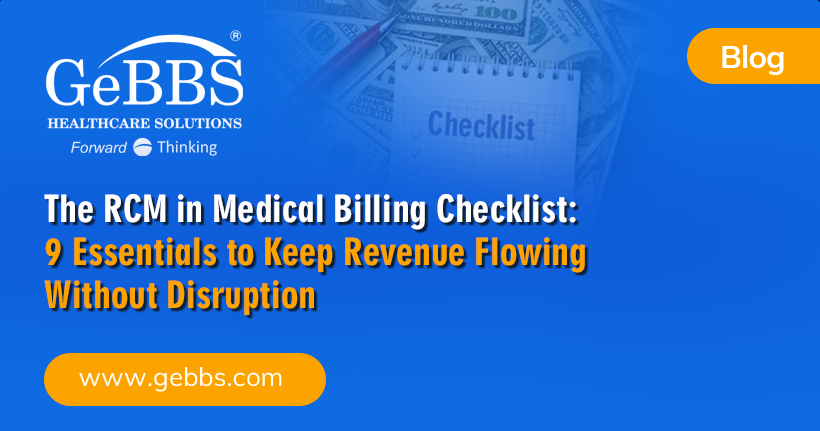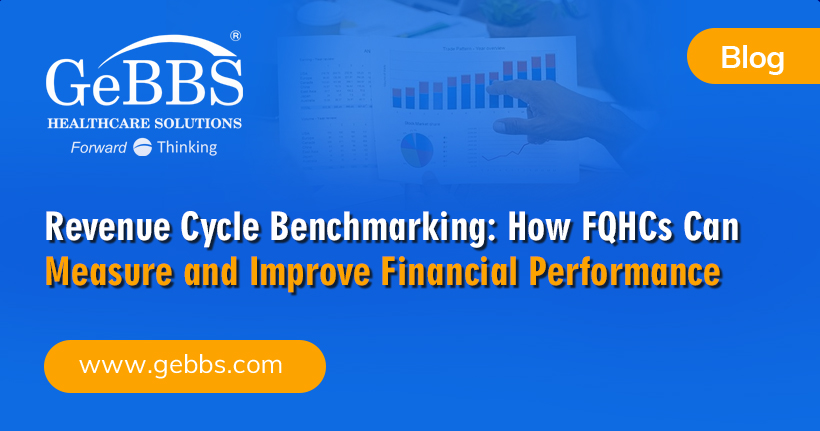Billing today feels like walking a tightrope. One wrong step and your entire revenue cycle starts to wobble. A missed authorization or data entry error can lead to rejected claims, denials, and backlogs that drain staff time. Isn’t there another way?
It all comes down to systems. And it starts with one of the oldest and most effective systems we’ve got: the checklist. A clear, practical RCM in medical billing checklist can prevent mistakes and stop revenue leaks before they start—giving you breathing room and restoring confidence in the process. So without further ado, here are nine important boxes to tick to keep revenue flowing.
1. Clean Data Capture at the Front End
We start with the basics. If patient demographics or insurance details are wrong, the claim’s already doomed. While a missing digit in an ID or a transposed birth date sounds small, it’s enough to trigger a rejection. That rejection then cascades downstream, adding more work, more delay, more cost. You know how it goes. That said, clean capture at registration is like laying a strong foundation for a house. Without it, cracks appear everywhere. Better to build right the first time than to repair endlessly later.
2. Strong Pre-Authorization and Eligibility Verification
Nothing stalls revenue like finding out after the fact that coverage wasn’t confirmed. A service may be perfectly coded and billed, but if the pre-auth wasn’t secured or eligibility wasn’t checked, reimbursement can grind to a halt. It’s the kind of snag that makes you wonder why it wasn’t caught sooner. Verifying benefits up front not only protects revenue but also strengthens your RCM in medical billing process by sparing staff and patients the unpleasant back-and-forth that comes later. Think of it as patching up a leaky roof before the storm, rather than mopping up after the flood.
3. Accurate Coding Supported by Clinical Documentation
Payers scrutinize claims with a fine-tooth comb. If codes don’t line up with the documentation, the claim may be denied, or worse, flagged for audit. While maximizing reimbursement matters, so does accurately reflecting the care delivered. Which is why coders need clear, complete documentation, rather than guesswork or scribbled notes. Think about it. If a diagnosis is written ambiguously, one coder might choose a less specific or lower-severity code, while another might choose a more specific or higher-severity code. That shouldn’t happen. Consistency matters, and so does accuracy. Get the documentation right, and coding follows suit.
4. Automated Claims Scrubbing Before Submission
Even the sharpest staff can miss details under pressure. That’s where automation earns its keep. It has become a cornerstone of modern RCM in medical billing. Claims scrubbers run edits that catch invalid codes, mismatched modifiers, missing fields, and other errors humans overlook. This leads to higher first-pass acceptance rates and steadier cash flow. What’s more, instead of staff spending hours fixing rejections, they can focus on exceptions and higher-value tasks.
5. Denial Management Workflow That Actually Works
It may be tempting to believe that denials are just “bad luck.” But in truth, they’re feedback. Without a structured process to track, analyze, and appeal them, revenue simply vanishes. A denied claim doesn’t have to stay denied. For example, a payer might reject a claim for lack of medical necessity, but if the documentation supports it, that’s recoverable revenue. This pattern shows up every day in hospitals across the country. That’s why we designed our zero balance management service to help hospitals recover millions in revenue that would otherwise be lost. Ultimately, strong denial management is at the heart of RCM in medical billing.
6. Timely Follow-Up on Outstanding AR
Aging AR is like food left in the fridge too long. The longer it sits, the less likely it can be used. The same is true for claims—time erodes collectability. Consistent, timely follow-up keeps dollars moving and prevents write-offs. For instance, if a payer misses their turnaround window, a quick nudge can release payment that would’ve otherwise lingered. Yes, letting AR pile up is easy. But tackling it daily is far more effective. Momentum matters, and steady effort prevents costly stagnation.
7. Compliance and Audit Readiness Built In
Audits aren’t a matter of “if” but “when,” especially in light of recent RADV audit changes. Today, building compliance into daily processes is critical for any RCM in medical billing strategy. It means you’re ready when the notice arrives, rather than scrambling afterward. Think of it like practicing fire drills. When the alarm sounds, everyone knows what to do. Regular internal reviews, mock audits, and consistent staff training help catch issues before regulators do. It may feel tedious, but proactive compliance is cheaper than penalties and reputational damage. And it’s less stressful than last-minute panic.
8. Actionable Reporting and Analytics
Numbers tell stories, but only if you know how to read them. Dashboards and analytics bring clarity to the chaos. They turn scattered data into a clear picture leaders can use to drive change. For example, a report might reveal that 40% of denials come from one service line. Armed with that insight, you can dig into why it’s happening and take steps to fix it. Visibility breeds control, and control creates confidence. Without it, leaders are flying blind in stormy weather.
9. Scalable Staffing and Technology Support
The revenue cycle isn’t static. It swells and contracts with patient volume, payer changes, and seasonal trends. Rigid staffing models struggle to keep pace, leading to backlogs when demand spikes. Flexible support—whether through cross-trained staff or a medical billing outsourcing partner like GeBBS—keeps operations resilient. Think of it like having shock absorbers on a car. The bumps don’t disappear, but the ride is much smoother. Scalability ensures that when volumes rise, revenue doesn’t stall, and when they fall, resources aren’t wasted.
Create a Stable Revenue Cycle with the RCM in Medical Billing Checklist
The pressure from regular denials and cash flow surprises doesn’t have to be the norm. Imagine your day with fewer fires to put out.
Claims move through cleanly and dashboards show exactly where revenue is at any moment. Staff aren’t scrambling and payments come in on time. The backlog that once drained energy feels like a thing of the past. That’s the power of the RCM in medical billing checklist and its nine essentials. Less stress. More stability. And the breathing room to finally lead your organization forward.
Revenue shouldn’t feel like a daily battle against denials and backlogs. GeBBS offers end-to-end RCM services with dedicated medical billing support built in—so every claim moves smoothly from start to finish. From eligibility checks to coding, submission, and follow-up, our teams and technology work behind the scenes to keep cash flow steady and denials under control. The result? Less stress on your staff and more stability for your organization. Contact us today to learn more.






